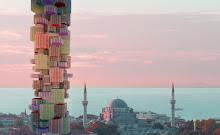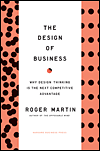 There seems to be an epidemic in many parts of the world. I am not sure why exactly, but there is a prevalent belief amongst up and coming global cities, that their cultural history is an impediment to economic prosperity and progress. This however, cannot be further from the truth. Too many times, it is only after they have wiped the slate clean that they realize what a unique resource they once had. I have noticed this development repeatedly across many cities and countries around the world. Even more puzzling to me is the absolute refusal of these respective cities to learn from other past examples; cities like Beijing.
There seems to be an epidemic in many parts of the world. I am not sure why exactly, but there is a prevalent belief amongst up and coming global cities, that their cultural history is an impediment to economic prosperity and progress. This however, cannot be further from the truth. Too many times, it is only after they have wiped the slate clean that they realize what a unique resource they once had. I have noticed this development repeatedly across many cities and countries around the world. Even more puzzling to me is the absolute refusal of these respective cities to learn from other past examples; cities like Beijing.
Over the past few years, the Chinese government has pursued an aggressive policy of destroying their centuries old hutongs to make room for wider roads and generic looking skyscrapers. Now more recently, with the upcoming Beijing Olympics - China's debutante ball, the Qianmen District which dates to before the Ming Dynasty is being replaced with a new and improved and shinier version - or so says the Communist Party chief, Lui Qi. Since 2005, large sections of this historic residential and commercial neighborhood located near Tienanmen Square have been cleared of residents and demolished. In its place Soho China, a real estate developer has started construction on a Disneyland-like re-creation of the mixed-use buildings that once were. Pastiche and kitsch will replace history. This apparently has become China's version of historic preservation. According to the Financial Times (FT), less than 500 of the 3,000 ancient alleys Beijing flaunted in the 1980's have survived.
Instead of taking the necessary time to conserve and renovate this incredible architectural heritage, China in a rush to show its pollution-free, sparkling clean, technicolor new face to the world in August 2008, has chosen to rebuild these buildings with all the benefits of modern construction and technology with a historic or traditional-looking style. Quoted in the FT, conservationist and resident Zhang Wei describes it best. "Qianmen was 600 years old, but now its culture has been reset to zero."
 Main road of the Qianmen District - a construction site in October 2007
Main road of the Qianmen District - a construction site in October 2007(Archery Tower in the distance) Image taken by Kelly Layton
There are also ethical reasons to protect such buildings. Governments in such extraordinary haste to transform, destroy centuries of legacy and history and deprive all future generations of the grandeur and history that once was. These structures are a part of our shared human history and experience.
The Olympics only last just two and a half weeks and on August 24, 2008, it will all be over and the mass of international crowds will leave Beijing - but forever, this history will be lost.
 Original drawing of what became the historic Guanghe Theatre (the oldest opera house in Beijing and thought to be the origins of Peking Opera) built during the final stages of the Ming Dynasty (1368-1644). The opera house was destroyed in May 2007 to be replaced with a new version.
Original drawing of what became the historic Guanghe Theatre (the oldest opera house in Beijing and thought to be the origins of Peking Opera) built during the final stages of the Ming Dynasty (1368-1644). The opera house was destroyed in May 2007 to be replaced with a new version.For more information, here are some other articles on the Qianmen District:
"The human cost of the Games" by Clifford Coonan
"The oven that roasted 115m Peking ducks has gone, but the fire burns on" by Jane Macartney
"Beijing Loses Soul to Wrecking Ball" by Robert Saiget
"Theater built in Ming Dynasty to be Demolished"








































